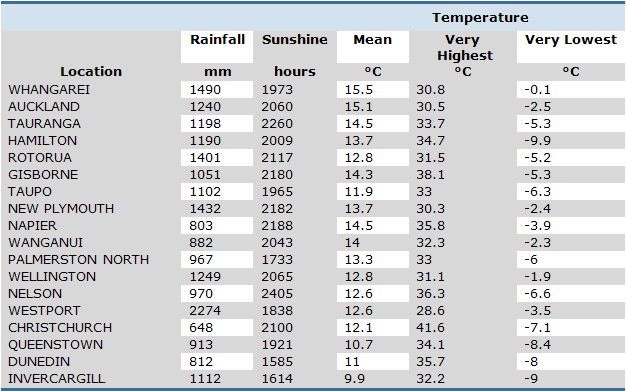The geographical area of New Zealand encompasses two main islands the North and South Island (Te-Ika-a-Maui and Te Wai Pounamu in Maori). The North and South islands have a combined area of approximately 268,000 square kilometers making it slightly smaller than Italy and Japan and a little larger than the United Kingdom. New Zealand is long and narrow, stretching a distance of 1600 kilometers from North to South direction with the width of no more than 450 kilometers at widest point. New Zealand has 15,134km of coastline and extensive marine resources. The country claims the seventh-largest Exclusive Economic Zone in the world, covering over four million square kilometres, more than 15 times of its land area with no land bordering countires. New Zealand has neighbouring countries with Australia to the northwest and Tonga and Fiji to the north.
The South Island is the largest land mass but contains only about one quarter of the population. The North Island is less mountainous than the South, and is marked by volcanism. South Island experience more snowfall compared to North Island. Auckland the largest city in North Island has never known snow similarly Christchurch the largest city in South Island occasionally has snow. Frosts can occur anywhere in New Zealand and usually form on cold nights with clear skies and little wind.
There is snow during winter in the South Island high country and in the North Islandís mountain ranges. Both the North and South Islands have ample winter ski fields, with the South Island well-known sky field at Queenstown which is renowned for its mountains and beauty of its woodlands, lakes and rivers.
Table 1: Climate information for selected New Zealand Location

Source: http://www.niwa.co.nz/education-and-training/schools/resources/climate
Recommended Clothing
People of New Zealand believe in informal and casual wear for most occasions. Formal wear with a touch of class is used whenever there's a visit to restaurants and nightspots.
Summers are very unpredictable and it calls for a light jacket or a sweater to be included in your luggage, should the weather suddenly give you a cold scare. When you visit the high country, you can expect some rain, so a light waterproof jacket becomes unavoidable. Clothing needs to be layered between May and September along with a pack of warm winter clothing. |